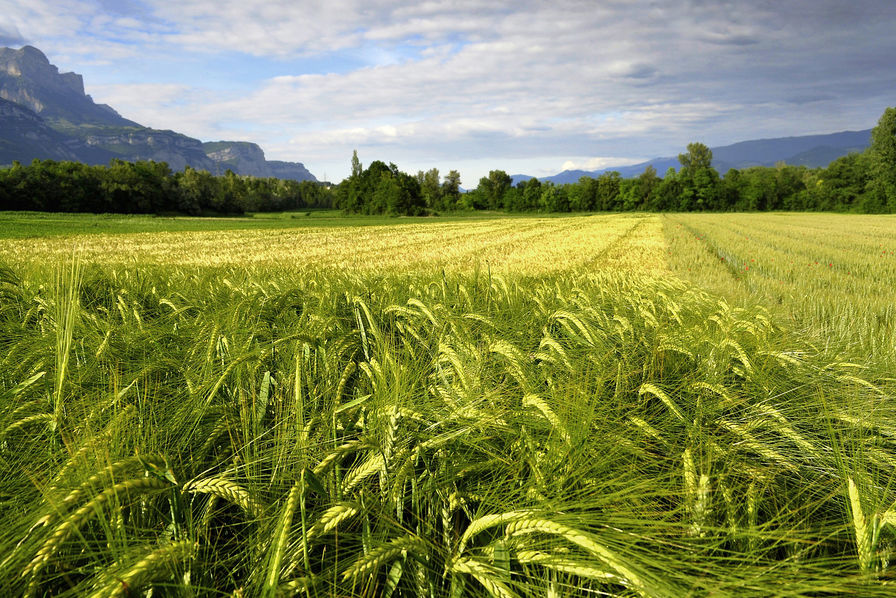The global production of potatoes is projected to grow by 50% by 2030, reaching 750 million tons (Mt). Potatoes will be at the forefront of food security strategies in emerging countries, where areas dedicated to their cultivation will significantly increase. Asia, Latin America, and Africa are expected to harvest 60% of the world’s tubers.
In Europe, the cultivation of potatoes eradicated major famines when it spread across the continent. While it did not eliminate food shortages, the expansion of potato production was a cornerstone of the economic boom in industrial countries.
Without potatoes to consume, famine would rage again. In Ireland, between 1845 and 1849, potato plantations were devastated by blight. The lack of harvest starved the population. The United Kingdom provided no assistance, leading to a quarter of the Irish dying from hunger and another quarter emigrating to the United States.
In the 21st century, potato cultivation still contributes to the food security of many countries. After wheat and rice, it is the third most important agricultural product consumed by humans worldwide. Every year, more than 370 Mt of tubers are harvested globally, with two-thirds of the world’s population consuming them.
“Asia accounts for 57% of the cultivated areas worldwide and 53% of tuber production,” highlights Diane Mordascq, author of the article “The Potato: A Reliable Food Value” published in the 2024 Demeter edition.
China is the world’s leading potato producer (93 Mt). “The potato is increasingly being cultivated at the expense of rice in regions where the cereal is produced, adds Mordascq. But the Middle Kingdom has also launched production in Inner Mongolia, in the Kubuqi desert.”
India (54 Mt) will remain the second-largest producer for years to come. However, Ukraine, in third place (21Mt in 2021), only harvested 16.6 Mt last year. Nearly 25% of the land is no longer cultivable, and yields have decreased in the remaining territory.
However, potatoes are perishable goods. Frozen industrial products (such as fries and cubes) or dehydrated items (chips, flakes) are the only effective forms of preserving tubers.
Currently, the world’s top ten exporting countries only export a few million tons of fresh tubers per year while harvesting nearly 220 Mt.
Thus, the globalization of the potato sector relies on a dense network of agribusiness companies, established near production basins, to transform millions of tons of tubers into storable goods (fries, flakes, chips, etc.).
However, by exporting these products, manufacturers are also exporting new eating habits to countries where potatoes are primarily consumed fresh.
Indeed, potatoes have always accompanied the evolution of dietary habits in Western countries.
In emerging countries, potato consumption is also set to evolve with the dietary habits of these nations. Potato cultivation will not indefinitely be the crop that saves peasants from famine.

Les pommes de terre jaunes sont nigériennes
Horizon 2030
In May 2022, the Director-General of the FAO opened the eleventh World Potato Congress in Dublin.
“Part of the world’s food security depends on potato cultivation, stated Qu Dongyu, the Director-General of the United Nations Food and Agriculture Organization (FAO). Its production must double in the next ten years.” It would thus reach 750 million tons (Mt) by 2030.
“The potato’s contribution to global nutrition would increase from 3.7% to 6.4% by 2030,” reports Mordascq.
However, the potato would remain the third most consumed food because wheat and rice productions are also expected to grow. Unless rice cultivation is further abandoned, as it is too water-intensive.
To produce 750 Mt of potatoes worldwide in the next ten years, at least an additional 40 Mt must be cultivated annually! Yet, over the past four years, production has not taken off.
In fact, the increase in global potato production would primarily be Chinese. “The Beijing government intends to impose this crop in the northeastern regions of the former Middle Kingdom,” reports Mordascq.
As we have seen, potato cultivation is also expected to expand into rice-growing regions.
Furthermore, improvements in cultivation practices would significantly increase yields in regions where potatoes are already grown. Agricultural programs launched by the FAO could be engaged to this end.
This phenomenon has already been observed in Western countries in the past. In the European Union, a 75% decrease in cultivated areas over the last 60 years has been largely offset by increased yields. Over time, emerging countries will not escape this development.
Combating Malnutrition
Indeed, potato cultivation naturally imposes itself to reduce, where possible, the portion of the planet’s population (9.2% in 2022) facing food insecurity.
“Between 1961 and 2021, the areas dedicated to potato cultivation increased by 628% in Africa and 339% in Asia,” emphasizes Mordascq.
On farms, the diversification of agricultural productions and the introduction of potatoes into the crop rotation enrich the variety of cultivated plants and contribute to strengthening the food security of peasants.
In her article, Mordascq reports various initiatives taken by some countries where potato production is the option chosen by peasants to feed themselves and to earn additional income by selling their surplus.
In Africa, Nigeria will become the world’s most populous country after China and India. It has been cultivating potatoes for sixty years. In 2021, it produced 12 Mt.
“To continue this development, Nigeria established a five-year strategic plan for potatoes in September 2023, aiming to ensure sustainable food and nutritional security,” emphasizes Mordascq.

Des pommes de terre – INRAE
Agronomic Assets
The plant’s very short vegetative cycle is its main asset. In 4-5 months, it is possible to harvest potatoes after sowing. The plant easily develops on irrigable lands. This is why Algeria and Egypt are among the top twenty tuber-producing countries worldwide.
Potatoes are also grown in South Africa and Morocco. In these countries, part of the harvest is exported to Western Europe during the lean period at the end of spring.
From an agro-ecological perspective, potato plantations emit fewer greenhouse gas emissions than other major crops.
However, monoculture of potatoes is not conceivable. Potato plants are nutrient-hungry, and their cultivation requires rotations of at least 4-5 years to limit the spread of diseases and pests.
To make production sustainable, regular inputs of organic matter buried in the soil will return some of the nutrients exported by the harvested tubers. For example, cereal straw chopped up from previous years’ harvests can be used, and spreading manure is also entirely feasible.
The rise in potato production also requires significant research efforts, both on cultivation practices and on varietal selection.
To accelerate the latter, the use of new genomic techniques (NGT) will be very useful. “They allow breeders to develop plants similar to those obtained from traditional breeding methods,” writes Mordascq. Among the thousands of natural varieties, some have characteristics that make them remarkable. By using NGTs, it will be easier to equip currently cultivated varieties with these new features to make them even more effective. A single vegetative cycle is sufficient to carry out this genetic modification, which is transmissible where it would take more than ten years when using traditional selection methods by crossbreeding.




